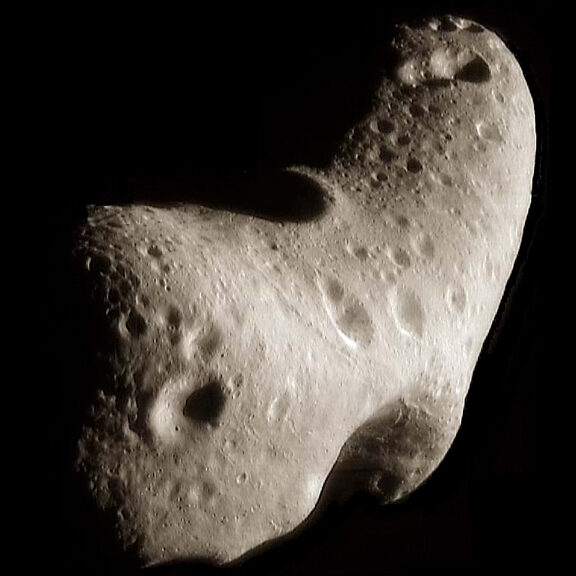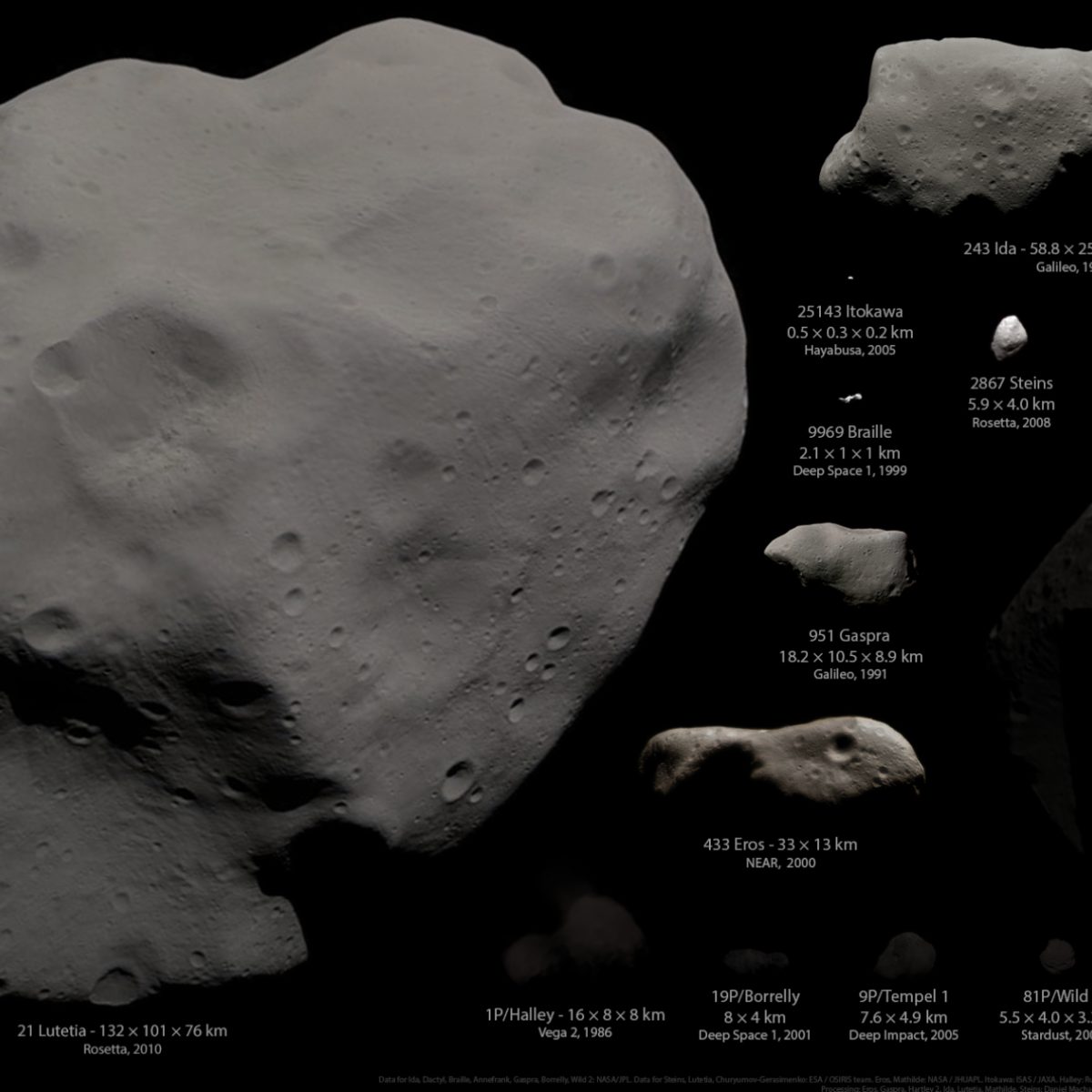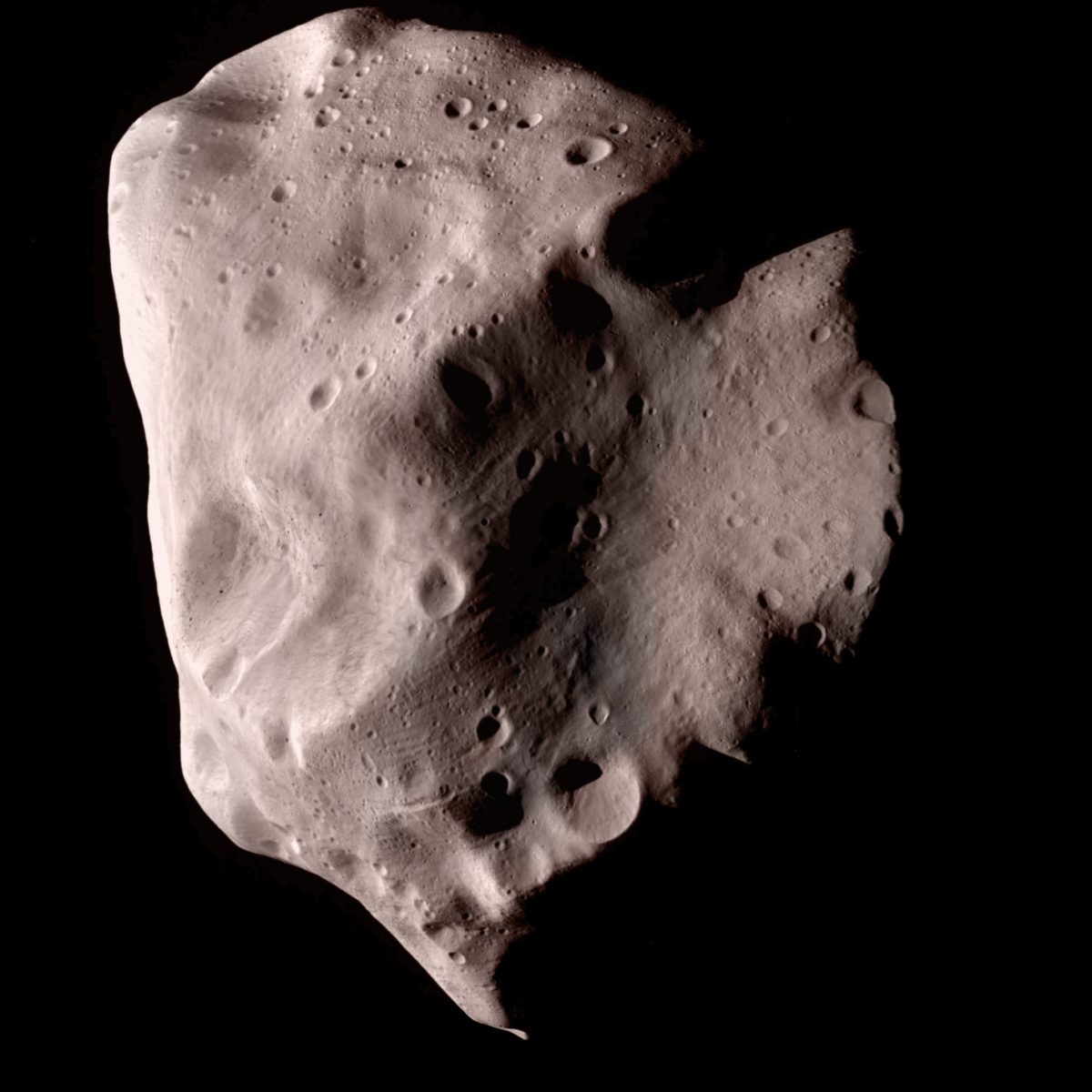All
All
Stories, updates, insights, and original analysis from The Planetary Society.
My ever-popular asteroids-and-comets montage, now in color, with bonus Toutatis
My collage of all the asteroids and comets visited by spacecraft is probably the single most popular image I have ever posted on this blog. I've now updated it to be in color and to include Toutatis.
DPS 2012, Day 5: How to make asteroids crunchy on the outside and soft in the middle
A summary of just one talk from the Division for Planetary Sciences meeting, by Lindy Elkins-Tanton, which provided a neat explanation for how asteroids can be melted and layered on the inside yet have a primitive-looking exterior.
Pretty Pictures: Amazing Asteroid Lutetia
A long-awaited data set is finally public (well, long-awaited by me, at least). The Rosetta team has now published their data from the July 10, 2010 flyby of asteroid (21) Lutetia. This data set is absolutely stunning, and my friends in the amateur image processing community wasted no time in creating art out of it.
Notes from Day 5 of the EPSC/DPS meeting: Saturn's storm, Phobos, and Lutetia
Today was (is) the last day of the Division of Planetary Sciences / European Planetary Science Congress meeting in Nantes, France.
Watching Phobos pass by Jupiter
Here is a really cool view of Phobos in the foreground with gigantic (but very distant) Jupiter sitting in the background, a fortuitous alignment that the Mars Express High-Resolution Stereo Camera team took advantage of on June 1.
Place names on Lutetia
Whenever we explore someplace new -- a new island, a new continent, a new cave, a new world -- there's a necessary activity that explorers must perform before they can sensibly tell the world about their discoveries: name things.
LPSC 2011: Day 1: Small bodies
Here are some of the noteworthy items from the morning's session on
Door 13 in the 2010 advent calendar
Time to open the thirteenth door in the advent calendar. Where in the solar system are these parallel gouges?
Asteroids and comets to scale, including Hartley 2
Just in time for today's Deep Impact press briefing, which you can watch on NASA TV in a few minutes: I've updated my montage of all the asteroids and comets that have been visited and photographed to include Hartley 2.
365 Days of Astronomy Podcast: What's in a Science Meeting?
Today the 365 Days of Astronomy podcast aired my contribution, What's in a Science Meeting?, about what scientists do at big meetings like the Division of Planetary Sciences.
Color portrait of asteroid 21 Lutetia
Since it doesn't look like the Rosetta mission is going to be releasing any color versions of their Lutetia close-encounter images any time soon, I figured it was time to make one.
How does Lutetia compare to the other asteroids and comets visited by spacecraft?
Almost a week after Rosetta flew past Lutetia, the asteroid is now a distant pinprick of light to the spacecraft, and the science team is getting down to the business of analyzing their data.
Rosetta's Lutetia pictures
I saw these pictures for the first time just 10 minutes before boarding my flight back home, and forced myself to download everything I could find as quickly as possible without pausing to actually look at them.
Rosetta Lutetia flyby successful; approach images posted; high-res images yet to come
All appears to be going very smoothly on Rosetta through, and after, its flyby today of asteroid (21) Lutetia.
Lutetia -- and Saturn!!
A quick post of just one of the gorgeous images from Rosetta's flyby of Lutetia today; for more, see the Rosetta Blog. But this one was just too pretty to wait for.
Rosetta's Lutetia navigation campaign complete
Rosetta's most important job over the last few months has been to observe how the position of asteroid (21) Lutetia shifts against the background of fixed (fixed, that is, as far as Rosetta can see) stars.
Three days to Lutetia for Rosetta!
On July 10, 2010, at 15:44:56 UTC, the Rosetta spacecraft will fly within 3,162 kilometers of the largest asteroid yet visited by a spacecraft.
Lutetia in Rosetta's sights
It's unimpressive now, but in a few weeks the pinpoint of light at the center of this photo of a starry sky will loom very large to Rosetta's cameras.
21 Lutetia, Rosetta's July target
While I was waiting for President Obama's speech yesterday, I read over a paper by I. N. Belskaya et al titled
New Horizons is targeting Jupiter!
New Horizons' Jupiter encounter is officially underway!


 Explore Worlds
Explore Worlds Find Life
Find Life Defend Earth
Defend Earth


 Sun
Sun Mercury
Mercury Venus
Venus Earth
Earth Mars
Mars Jupiter
Jupiter Saturn
Saturn Uranus
Uranus Neptune
Neptune Small Bodies
Small Bodies![Asteroids and comets visited by spacecraft as of December 2012, in color, excepting Vesta [DEPRECATED]](https://planetary.s3.amazonaws.com/web/assets/pictures/_1200x1200_crop_center-center_82_line/130437/20121218_asteroids_comets_sc_0-000-100_2012_color_brightened.jpg)


















